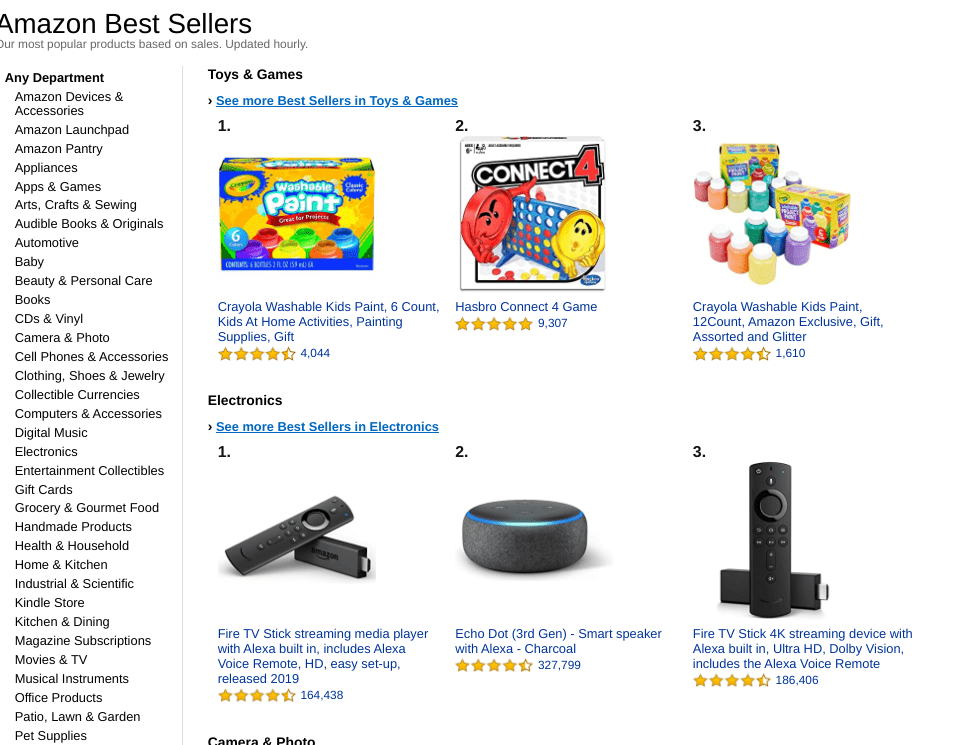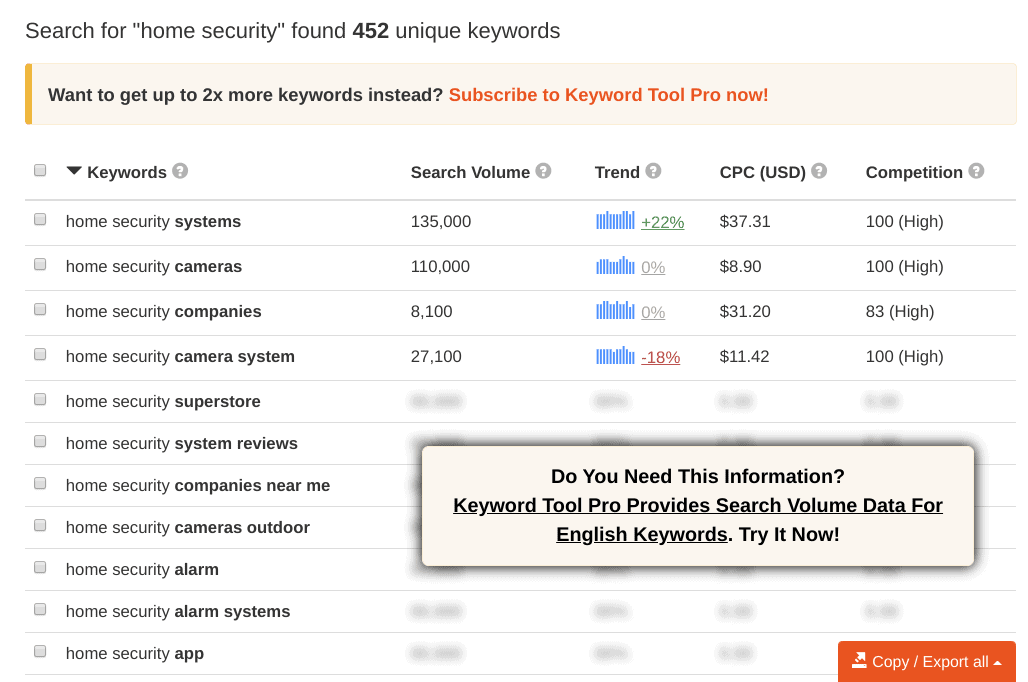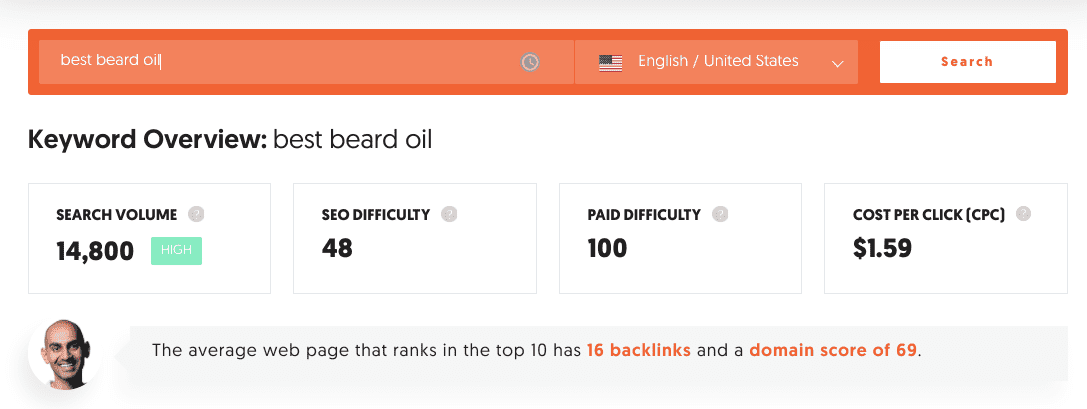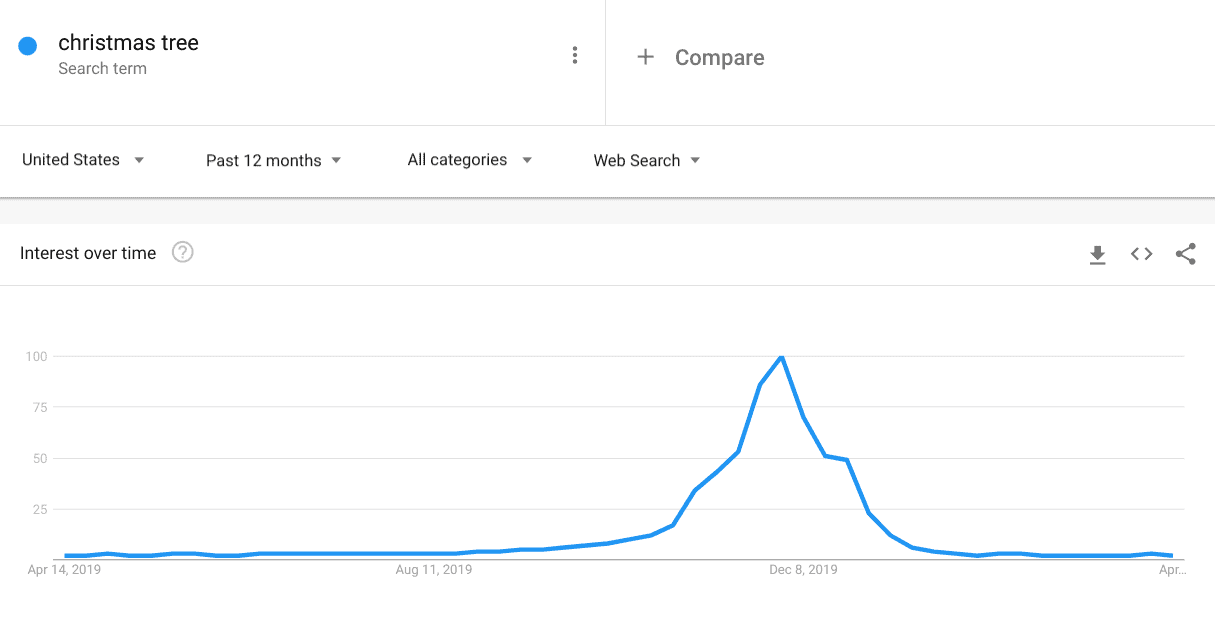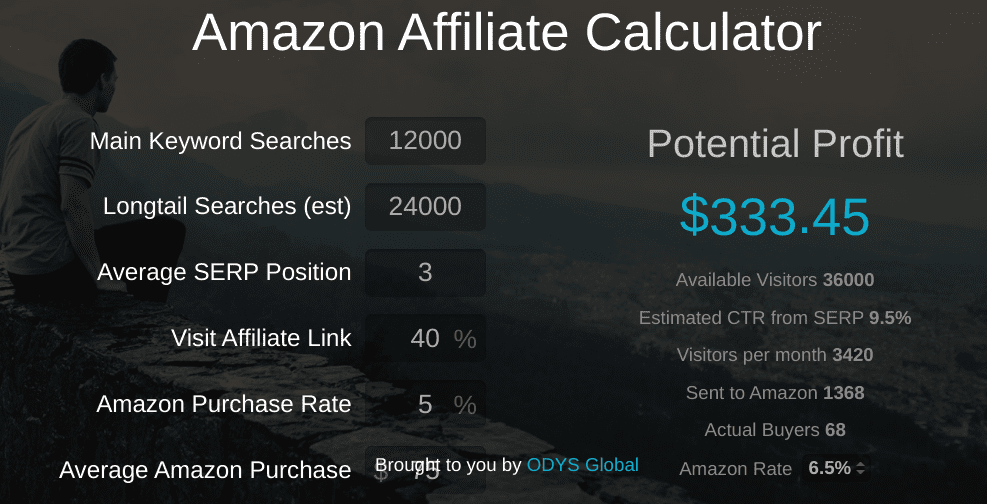One of the most popular affiliate marketing marketplaces is Amazon. According to W3Tech, the Amazon Associates program is used by at least 90,000 websites, including large sites such as CNN and The New York Times.
Amazon has more than 12 million products on its website, and its Associates program gives you access to thousands upon thousands of high-quality products to promote.
However, if you want to be successful with Amazon affiliate marketing, it is important to choose the right niche. Today, we will be teaching you how to choose a profitable niche on Amazon.
What Is The Amazon Associates Program?
Affiliate marketing is a business model that allows you to make money online without creating a product or even having any in stock. Instead, you promote other people’s products and get a share of the profit.
The benefit of affiliate marketing is that you can skip the entire product creation process, from brainstorming a brand logo to outsourcing production. You also won’t have to deal with shipping, handling, customer service, returns, and all other kinds of hassles you will encounter when running a business.
There isn’t a lot of upfront investment required, which makes affiliate marketing perfect for those looking to earn passive income from home without having a lot of startup capital.
Unlike other affiliate marketing programs, the Amazon Associates program lets you promote Amazon products for a small commission. One of the benefits of working with Amazon Associates is that you can be sure that the products you are promoting are high-quality.
In addition, Amazon offers quick shipping options and easy returns. This will help keep your fan base happy and help you get more repeat sales.
However, although you don’t have to invest a lot into an Amazon Associate business, you do have to treat it seriously, as a real business. You can’t go in blindly – you must have a plan.
It’s important to choose a specific niche so that you can create a site and online presence in that niche.
Let’s go through some things you should be looking at when choosing a niche to promote on Amazon.
Things To Consider When Choosing A Niche
You Should Be Passionate About It
It’s important to be excited and passionate about what you do. Of course, there’s no rule that you can’t promote anything, even if you have absolutely no interest in it.
However, if you find what you are doing boring, you are likely to be less motivated and be less productive. Choosing a niche that you are passionate about – whether that is home gardening, skincare, or children’s toys – will give you something to look forward to and keep you pushing forward even when business isn’t going well.
There’s another reason you want to choose something you are passionate about – you likely will have more experience with it. Even if you don’t have a lot of expertise in that area right now, it will be easy for you to learn more, as you will enjoy doing online research about it.
Expertise is essential when you are an affiliate. If you are an expert on skincare, for example, you will be able to write informative blog posts on topics such as how to avoid acne, what kind of moisturizer to use before bed, and how to choose facial creams based on the kind of skin you have (oily vs. dry).
When you have an informative blog, you will be able to become an authority in your niche. This will cause people to trust you, and they will be more likely to listen to your recommendations when you link to an Amazon product.
When you have expertise, you will also be able to determine which products are high-quality and which ones are not worth promoting.
Having an authoritative site is the only way to rank on Google and get organic traffic. With Amazon Associate marketing, organic traffic can be very important as the commissions are not that high (this means it will be harder to be profitable with paid advertising).
It Shouldn’t Be Too Broad
It’s important to spend some time here explaining the difference between niches and sub-niches, and why you might want to focus on a sub-niche.
The problem with big niches is that they can be too broad. This can hurt your chances of success for several reasons.
First of all, the competition might be too high. If you simply focus on the “sports” niche, for example, you will have a harder time getting your website to rank due to the competition.
Instead, you might want to focus on a specific sport, such as baseball. Or perhaps you might want to narrow down even further and focus on baseball mitts.
Let’s take another example – beauty. Beauty is a very broad niche, and starting a site focusing on “beauty” will be spreading yourself out too much. Instead, you can get better results by focusing on a specific aspect of beauty, such as facial skincare – or beard oils if your niche is men’s style.
There’s a delicate balance between not spreading yourself out too wide and not limiting yourself too much either.
If you narrow down too much, you might have a hard time finding profitable products to promote. You may find it hard to scale as well because the demand might be limited.
For example, if you choose plastic bar soap travel containers as your niche, you might be limiting yourself to a very small audience. There is only so much demand for that specific kind of product; instead, you might want to focus on travel containers in general.
There’s another problem with narrowing yourself down too much. When you build your Amazon affiliate site, you want to be producing quality content on a regular basis.
If your site is centered around plastic bar soap travel containers, you will find it hard to create new, quality content after some time. After all, there’s only so much you can write about that topic.
On the other hand, if your site centers around travel containers in general, you have more to work with – you can write tips on how to save space when traveling with a small backpack or how to choose what to leave behind and what to bring along when going on a trip.
If your niche is facial skincare, there is a ton to write about – you can give tips for how to prevent pollution from dirtying your face and causing acne, how to prevent sunburn, the best kind of moisturizers to use for each specific face type, how often to wash your face and what kind of soap to use, and so on.
To sum it up: While you don’t want to be too broad, it is just as important not to limit yourself so that you have room to grow later on.
There Should Be A High Interest
There are a number of ways you can discover popular niches. One way is to simply go to Amazon and start searching through the categories.
You can go through the bestsellers on Amazon to see popular products and get ideas of which product category you want to focus on.
A great free tool you can use to get niche ideas is UberSuggest. UberSuggest is part of Neil Patel’s blog.
Enter any keyword and you will get the following information –
- Search Volume
- SEO Difficulty
- Paid Difficulty (Adwords, etc.)
- Average CPC
You will also get tons of related keyword ideas, which you can use for niche inspiration. In addition, you will get a list of related blog posts you can use for content ideas.
This is the #1 tool I recommend as you can use it for your other research needs as well, as we will see later.
Keywordtool.io is another free keyword tool where you can do keyword research for search engines such as Google and Bing and online marketplaces such as Amazon and eBay.
One thing to look out for is keyword search volume. This will help you gauge popularity.
WordStream also has a free keyword tool you can use to see popular searches on Google and Bing.
It’s important to look for products that are popular not just on Amazon but on Google as well. This is especially true if you plan on getting most of your traffic organically through your blog.
Alternatively, you can use a premium SEO tool like SEMRush, Ahrefs, Spyfu, or Moz.
These keyword tools are also great for helping you find sub-niche ideas. Simply enter a broad category to get tons of keywords and niche ideas.
Finally, you can also use a tool such as Jungle Scout, which was designed to help Amazon sellers find profitable niches but can also be useful for affiliate marketers. JS lets you search for popular Amazon niches, categories, and products based on sales volume and other criteria.
The Competition Shouldn’t Be Too High
It’s not enough to know that a product is profitable. There’s no use in choosing a profitable niche if you can’t get any visibility.
To research competition levels you will be using keyword tools again. You can use any of the keyword tools mentioned above.
Uber Suggest will give you an SEO score to help you find out how difficult it would be to rank for a particular keyword.
Keywordtool.io will give you both the average CPC bid and the competition score. However, it’s important to keep in mind that both of these scores pertain to paid advertising with Google Adwords.
While a high competition score and high CPCs on Google Adwords are usually indications that a keyword has a high level of competition in organic search as well, it is better to use a keyword tool that measures SEO competition specifically.
Jaaxy and Long Tail Pro are two more tools that will give you scores for how difficult it will be to rank for a certain keyword based on SEO competition.
These scores are not only based on how many sites are competing for a particular keyword but the quality of those sites – such as their size, age, page rank, number of backlinks, and so on.
You can also do some manual research. Just go to Google and type in your target keywords to see which sites are in the top 10 of the search results.
Are they huge sites such as Forbes? Or are they smaller blogs that you have a chance competing against?
You can also copy and paste the URLs of those sites into UberSuggest to get an SEO snapshot of their SEO performance.
For example, it will show you the keywords it is ranking for, its organic monthly traffic, its domain score (signifying SEO strength), how many backlinks it has, how high it ranks for keywords, and so on.
You can also use Moz or SEMrush to do further research on those sites.
It Should Be Evergreen
Should you choose an evergreen niche or one that is seasonal? An evergreen niche is one that doesn’t change from season to season or from year to year.
Examples of evergreen niches would include exercise equipment (dumbbells), electronic accessories such as cell phone cases or earphones, and beauty products such as facial moisturizers and makeup.
There are two kinds of non-evergreen niches. One is seasonal, where interest fluctuates depending on the season but is consistent year after year.
For example, this would include Christmas trees, Halloween decorations, winter gloves and coats, and baseball bats.
Another type of non-evergreen niche is one that some would call a “fad” – a product that has a lot of temporary, short-term interest, or a new type of clothing that will likely go out of style soon.
A great example of this is the fidget spinner. Fidget spinners fascinated the world for a while, but the fad and interest soon passed.
So, which one should you choose? If you are looking to create a stable, long-term business, you should definitely choose an evergreen niche.
In general, if you are new to affiliate marketing, an evergreen niche is the way to go.
Non-evergreen niches do have their place if you are an experienced affiliate marketer. You can definitely tap into a passing fad to make a lot of money in a short amount of time – but you have to know how to drive large amounts of traffic quickly.
The same goes for seasonal niches – they’re good for seeing a spike of sales and profits around Christmas time, for example, but they’re not great if you want a full-time business year-round.
You can use Google Trends to check whether a specific topic has a steady interest over time or only spikes depending on the season.
It Should Have High Profits Per Sale
Different categories on Amazon have different commission rates. It’s always a good idea to check the commission rates for the category or niche you are thinking of doing business in.
Here is a full list of the different commission rates available, as well as the flat commissions for sales related to Amazon Home Services, Audible, Amazon Prime, etc.
While the difference between three and four percent may sound minor, remember that things do add up over time. In addition, the difference between some categories is much more significant – for example, 2.5 percent on computers vs. eight percent on furniture and home improvement items.
However, it’s not just the commission rates you should be looking at. Let’s compare two items – physical books, which have a commission rate of 4.5 percent, and computers, which have a commission rate of 2.5 percent.
Which one is better? Surely, you should pick the physical books niche and create a book review site, as books have higher commissions?
However, remember that a 4.5 percent commission on a $20 book is only $0.90. On the other hand, 2.5 percent of a $600 computer is $15.
You will need to make more than 16 book sales to earn what you would with one computer sale.
You may think that it must be easier to sell cheaper items, but that is not always the case. There is a market for high-quality computers just as there is a market for good books.
You can target that specific demographic – people who are interested in buying a computer in the $400-800 range – and you can make sales just as easily and regularly.
Even if you did have a lower conversion rate with higher-priced items, you would still earn more, being that your earnings per sale will be more than 16 times higher (in the example of books vs. computers). With the same amount of traffic, you can have a much lower conversion rate and still make more money.
For that reason, it’s usually better to pick a niche where you can promote more expensive items. If you are selling $5 mugs, it will be harder to rack up enough sales on a daily basis to earn a full-time living; on the other hand, you would only need an average of two sales of $600 computers a day to earn an extra $900 a month.
There is a tool called AMA Profits owned by Odys Global that can help you figure out whether a niche or product will be profitable or not.
There’s no reason to make success less accessible for yourself. Don’t work harder, work smarter.
How To Pick The Right Products?
We have gone over how to pick a good niche, but we haven’t yet gone over how to find profitable products in those niches. Let’s go over some tips now.
First of all, as we already mentioned, you want to promote a product that will be profitable for you. This means that while it’s okay if you promote a couple of products that are worth $5-10, you’ll generally want to focus on products in a higher price range.
Next, you want to make sure that the product is popular. Amazon will give you a sales rank for each product you see in your Amazon Associates account.
In addition, it is important to make sure that the product has great reviews. This will help you weed out low-quality products that will leave your readers unsatisfied and feeling as if they can’t trust you again.
Finally, make sure that the product has good shipping and return policies. If possible, look for products that have free shipping and are eligible for Amazon Prime.
The 12 Best Niches For Amazon Affiliate Marketing
For your convenience, we have put together a list of the 12 best niches to use as an Amazon Associate. These niches are evergreen, have products that will always be in demand, and have a large variety of profitable products to choose from.
- PC, laptops, and gaming
- Home improvement, gardening tools, etc.
- Women’s beauty
- Men’s beauty and skincare products
- Baby toys
- Clothing, fashion, and jewelry
- Electronic accessories
- Security and home security
- Travel
- Exercise and Health
- Sports
- Pets
We have also put together a list of sub-niches from the niches just mentioned. These are just examples to get your brain juices flowing:
- Chromebooks
- Wood sawing tools
- Women’s facial care
- Beard care – beard oils, beard balms, beard washes and conditioners, razors, etc.
- Rotating baby mobiles and other accessories for baby cribs
- Hair accessories
- Phone cases
- Combination locks for front doors
- Travel backpacks or fanny packs
- Yoga mats or protein powder
- Golf balls and clubs
- Dog collars and leashes
We have included one sub-niche example for each of the top niches.
What You’ll Need To Be An Amazon Associate?
Let’s quickly go over what you’ll need to be a successful Amazon Associate, though that is really the subject of another article.
Your first step will be creating a website. Buy a domain name and get a cheap hosting plan at a site such as Bluehost or WP Engine.
Then, use WordPress to create your blog. Blog on a regular basis as we mentioned – for example, if your niche is home security, write about tips for keeping your home and children safe.
Finally, recommend products at the end or in the middle of your blog posts. You can also write product reviews, but don’t make your whole site consist of reviews.
Which Niche Is Best For Amazon Affiliate Marketing?
There is no one-size-fits-all answer to this question, as the best niche for Amazon affiliate marketing will vary depending on your own interests, skills, and goals. However, there are a few general tips that can help you narrow down your options and choose a niche that is likely to be profitable and enjoyable for you to work in.
Some things to consider when choosing a niche for Amazon affiliate marketing include:
- The profitability of the niche: Is there a high demand for products in the niche, and are those products likely to be purchased through Amazon?
- Your interest in the niche: Do you have a personal interest in the topic, which will make it more enjoyable for you to work in?
- Your skills and experience: Do you have the skills and experience necessary to be successful in promoting products in the chosen niche?
Taking all of these factors into account will help you choose a niche that is both profitable and enjoyable for you to work in.
Which Niche Is Most Profitable?
There is no definitive answer to this question as it depends on a number of factors, including the type of business, the products or services offered, the target market, and the competition.
However, some niches are generally more profitable than others, such as the gaming industry, the health and wellness industry, the luxury goods market, and the technology sector.
First, research your industry and target market. Find out what they want and need, and what they’re willing to pay for. Then, create unique content to attract the prospective audience.
Finally, make sure you have a solid content marketing strategy in place to reach your target market. If you can do all of these things, you’ll be well on your way to profitability.
Wrapping It Up
There’s a reason so many people use Amazon Associates. Use the tips in this article to help you find the right niche and get your online business up and running today.

Benjamin Levin is a digital marketing professional with 4+ years of experience with inbound and outbound marketing. He helps small businesses reach their content creation, social media marketing, email marketing, and paid advertising goals. His hobbies include reading and traveling.



